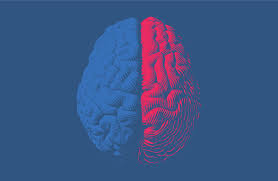A groundbreaking study conducted by Stanford Medicine researchers has introduced a novel artificial intelligence model that has achieved over 90% accuracy in distinguishing brain activity scans from women and men. The study findings, which were published in the Proceedings of the National Academy of Sciences on February 19, provide valuable insights into the existence of reliable sex differences in the human brain. The research highlights the importance of understanding these variances in addressing neuropsychiatric conditions that impact individuals of different genders.
Vinod Menon, Ph.D., a professor of psychiatry and behavioral sciences at Stanford and director of the Stanford Cognitive and Systems Neuroscience Laboratory, emphasized that sex plays a crucial role in various aspects of human brain development, aging, and the occurrence of psychiatric and neurological disorders. The study, of which Menon is the senior author, focused on identifying consistent sex differences in the healthy adult brain as a fundamental step towards comprehending sex-specific vulnerabilities in neuropsychiatric disorders.
The artificial intelligence model developed by the research team pinpointed specific brain regions that significantly contributed to distinguishing between male and female brains. These regions included the default mode network, which aids in processing self-referential information, as well as the striatum and limbic network, associated with learning and reward response mechanisms.
The study refrains from definitively attributing sex-related differences in brain organization to early life influences, hormonal disparities, or societal factors. While previous research struggled to establish concrete distinctions in how male and female brains operate, the current study utilized advanced artificial intelligence techniques and extensive datasets to conduct a robust analysis.
Employing a deep neural network capable of analyzing dynamic MRI scans, the researchers demonstrated superior performance in classifying brain imaging data based on gender. The model accurately differentiated between male and female brain scans in approximately 1,500 cases, suggesting that detectable sex differences in brain organization exist but have previously eluded consistent identification.
The researchers further utilized explainable AI to elucidate the critical brain networks influencing the model’s decision-making process. By identifying brain features pivotal in distinguishing male and female brains, the team created sex-specific models predicting cognitive performance based on functional brain characteristics unique to each gender. These models underscored the significant behavioral implications of sex-specific brain variances.
According to Menon, the successful application of the deep neural network model not only sheds light on sex-related brain differences but also serves as a valuable tool for exploring various aspects of brain connectivity influencing cognitive abilities and behaviors. The research team plans to make their model accessible to other researchers for investigating brain disparities associated with learning difficulties, social interactions, and other behavioral aspects for the advancement of personalized therapeutic interventions.
By unveiling distinct brain organization patterns in men and women, this study represents a significant leap towards understanding the role of sex in shaping human brain functionality and its implications for neuropsychiatric conditions.
*Note:
1. Source: Coherent Market Insights, Public sources, Desk research
2. We have leveraged AI tools to mine information and compile it.

